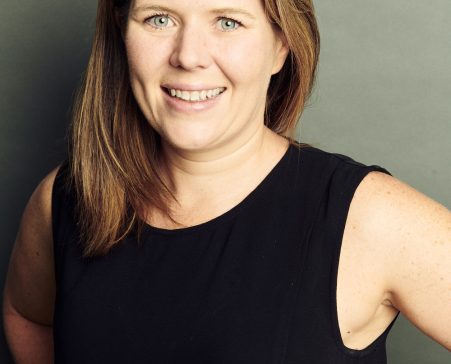Diversity of Thought Blog
4 Pillars to Achieving Gender Equality

The process of change within any organisation is faced with challenges, human and procedural. Detractors will argue against the necessity to change and worse, may create barriers to hinder progress; the passive majority will entrench themselves in the status quo and undermine, or ignore, any efforts to achieve the goal. It is therefore imperative that leaders are vocally supportive, actively advocating for and driving the systemic changes, and behaviourally role-modelling and leading to a diverse and inclusive organisation.
The journey starts with leadership but embedding gender diversity and equality into an organisation’s culture will be everyone’s responsibility.
With reference to the Workplace Gender Equality Agency’s strategic model, the four pillars to achieve gender equality have been defined as:
-
Leadership Accountability
Increase visible leadership accountability for gender equality.
Senior leaders will impact the pace of change through their management practices and role-modelling behaviours. Incorporating gender-related metrics into organisation-wide scorecards, and equally to individual incentives, may act as a stimulus to accelerate the pace of change by regularly shining the spotlight on the agreed milestones.
-
Talent Pipeline
Build a representative and sustainable gender diverse talent pipeline to leadership.
If organisations are lacking gender equality in leadership positions, the first action is to build a gender diverse talent pipeline to provide a pool, including internal and external candidates, from which to draw for future senior appointments. Multiple strategies can support this process, from developing female-friendly job ads to incorporating conscious bias to speed the onboarding of role-qualified females.
-
Building Capability
Grow leader and manager capability to deliver your gender equality vision.
Organisations can implement training, coaching and mentoring programs to assist managers in developing their capability to deliver your gender equality vision.
Unconscious Bias:
One of the most significant, and no doubt impactful, topics is unconscious bias. Human beings all have unconscious bias; it develops from early childhood and continues throughout our lives. It is difficult to re-program our biases, but we can learn how they affect our decision-making. Possibly using external experts in this field, managers can be encouraged to see the world through different lenses in order to encourage the best from their teams. Adapting systems and processes to remove inequality in the selection process and thus creating a level playing field for all candidates, is a must.
Apart from the selection process, the most evident example of unconscious bias (or in some instances, conscious bias) is the predominance of gender wage gaps. Conducting a wage analysis and developing a short-term process to fixing it is a must.
Leadership Skills:
Unpacking leadership qualities, in senior roles in particular, may identify that greater emphasis should be placed on the human skills, previously labelled ‘soft skills’, that have most recently been identified by research authorities as the leadership qualities which will be of greatest importance in high-performing organisations in the future. Acknowledging that there are more qualified females leaving university than males, we must question whether ‘meritocracy’ exists in organisations that are dominated at the leadership level by men; accepting that some industries are historically masculine, but with changes occurring. The re-thinking of ‘merit’ and applying well-defined leadership criteria during selection processes should include training and workshopping with hiring managers and directors.
Increased reliance on technology to manage and monitor ‘what’ organisations do, will result in greater emphasis being placed on our leaders to guide ‘how’ we do it. Vision, empathy, collaboration, respect, professional humility, commitment to corporate values, authenticity and reflection, and inspiring ‘followship’ have been identified as future leadership traits that we need to nurture. Women traditionally, although of course not exclusively, demonstrate these ‘human’ skills and are likely to provide a better cultural balance.
Female Mentoring
Female to female mentoring programs provide support to women wanting to move into senior leadership positions and have been shown to help them to build confidence and to navigate the journey successfully. It is well documented that women are often reticent to push themselves forward for promotion, hoping that their performance will speak for itself. In the usually fast-paced business environment in which most organisations operate, women need to confidently assert themselves and to articulate clearly that they are ready to take on more responsibility.
Male Champions of Change
In accepting that most senior leaders are currently men, this gives rise to the opportunity for men to sponsor females who aspire to leadership roles. Capable women are often overlooked for senior appointments due to several factors, one being that leaders often recruit in their own image – men are more likely to appoint men. Where male leaders identify women capable of taking on more responsibility, they should actively advocate for them – during promotional discussions, performance reviews, restructures, talent reviews, development pool candidacy and wherever else the opportunity may arise.
Sexual Harassment Training
Workplaces are obliged by WHS laws to provide safe working environments for their employees, and this includes freedom from sexual harassment. It is recommended that classroom style training is held for managers to highlight changing cultural expectations, and to encourage round-table discussions relating to appropriate behaviour at work. Organisations with a reputation for treating women disrespectfully will be outed.
Rethinking Masculinity in the 21st Century
The role of men in society has long been based around ‘strength’, both physical and mental; an unemotional macho image. Whilst this image is at last being challenged, research has shown that many of today’s (male) youth and young men have become confused about their roles. In order for women to have equal career opportunities, the see-saw process means that men will need to take on more family caring and community responsibilities. Round-table discussions, led by professional facilitators, have been shown to assist in re-assessing what it means to be a man in the 21st Century and to break down some of the outdated paradigms, such as men must be the breadwinners, and men can’t show emotion. It has also been shown that such discussions help to improve wellness in young men as it releases them from previously held expectations that don’t align with their own aspirations.
A gender equality strategy must address the needs of women and men in the workplace, and ‘men-only’ sessions will demonstrate equal consideration.
-
Workplace Flexibility
Develop a workplace and culture which fully leverages flexibility as a business enabler.
With women in society generally still carrying the greatest share of responsibilities for parenting and caring for elderly family members, workplace flexibility is often a significant determinant as to whether a woman will apply for, and be positioned for success, in a role. Remodelling roles to eliminate or share some of the tasks, could create senior positions that don’t necessitate people working the traditional working week. With gender equality as our ultimate societal goal, organisations need to acknowledge that company policies must provide equal opportunities for women and men to cater for family responsibilities.
Workplace flexibility relates not only to the number of hours worked, it also applies to where the work is performed. Much research has been conducted on the topic and has generally proven that remote workers are equally, if not more, productive than those always present at the central hub or office. Apart from the obvious benefits of relieving stress from not having to negotiate city traffic, most people benefit from working separately when needing to apply focus to tasks, away from the noise and interruptions generally experienced in open plan offices.
Managers at all levels must come to terms with the fact that managing remote workers is a leadership skill that needs to be prioritised. Some organisations won’t advocate fully remote working if their business revolves around client service, intra-business collaboration and strong client relationships which benefit from regular face to face meetings. However, in many situations it is not the work itself that dictates that an employee must be in the office all the time, but the manager’s reluctance or inability to confidently manage remote workers. Managers should adopt an “if not, why not?” approach to approving remote working and flexibility, ensuring that a genuine business reason is given if the request is denied. When managers cite to HR (in confidence) a ‘lack of trust’ when denying a request to work remotely, then it could be argued that either the employee or the manager is not suited to the role.
It should be noted that with effect from December 2018, employees have been granted greater rights to request flexible working if they fall into certain categories, including but not limited to: parent of a school-age child; a carer for a household member; an employee over the age of 55.
With many capable, senior, experienced women, and a growing number of men, looking for flexible work, creating a workplace and culture that caters for – and encourages – various working models, will fully leverage flexibility as a business enabler. One caution when developing a flexible working model – don’t try and shoehorn a full-time role into part-time hours as often happens. Neither party will benefit!
About the Author
Hilary Lamb is Chairman of The 100% Project as well as Director of Engagement & Cultural Development for CROSSMARK Asia Pacific. She has a demonstrated history of working in the non-profit organisation management industry and is skilled in coaching, sales, management, account management, and employee training. It is her personal and professional goal to contribute to the changing environment to provide equal opportunity for everyone.

